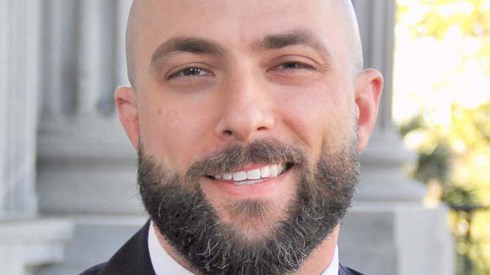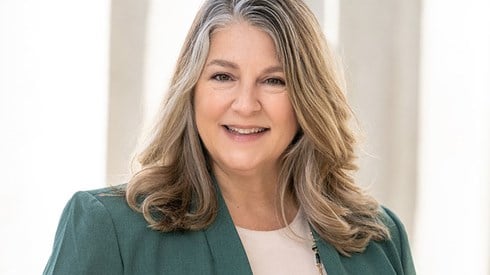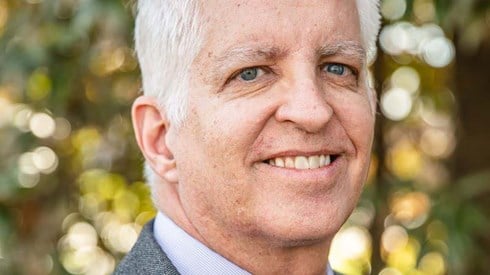Navigating a Year of Captive Insurance Regulatory Transition

February 22, 2023

Effective regulation is at the heart of a successful captive insurance industry. It's not surprising, then, that a flurry of recent of moves at the highest level of a number of states' captive regulatory operations caught the captive industry's attention.
"Captive regulators and good regulation are the backbones of the captive insurance industry," said Dan Towle, president of the Captive Insurance Companies Association (CICA). "If we don't have qualified regulators, the industry is in jeopardy."
The good news: the states that saw top regulators exit over the past year or so managed to fill those vacancies with experienced regulators, and captive business seems to have proceeded without skipping a beat.
Still, with the issue of attracting and developing necessary talent a hot topic across the captive insurance industry, the recent turnover among top captive regulators has made regulatory talent an issue worth considering. In fact, it will be discussed as the subject of a session at CICA's upcoming 2023 International Conference in Rancho Mirage, California.
Titled "There's a New Sheriff (Regulator) in Town," the March 7 CICA conference session will see a panel of new top captive insurance regulators answering questions about their domicile's response to the turnover and whether captive owners are likely to see any changes.
Panelists on the session include Lori Gorman, deputy commissioner of the North Carolina Department of Insurance; Steve Kinion, captive director in the Oklahoma Insurance Department; and Joe McDonald, director of captives in the South Carolina Department of Insurance—Captive Division. Gerald Yoshida, partner at Goodsill Anderson Quinn & Stifel, will moderate the session.
North Carolina, Oklahoma, and South Carolina are among the US domiciles that have seen turnover in the ranks of their top captive regulators over the past year through a combination of retirements and career shifts. Others include Vermont, Tennessee, and Delaware.
With that turnover, the captive regulatory operations of a full one-third of the top 15 US domiciles saw changes at the top over the past year, said Mr. Kinion. "And that's probably something that's never happened before." Education and knowledge sharing are essential to raising productivity, such that the regulatory industry is not just surviving but thriving, Mr. Kinion explained.
"In my opinion, potential issues facing the industry, any domicile, and its captives around changes in regulators, are how new regulators will approach captive regulation in general, how any new approach will impact a domicile's reputation and therefore the captives that choose to domicile there, and how new relationships will change the regulation of a particular captive," Mr. McDonald said. "If new regulators take a drastically different approach or consider regulating captives in the same manner required to regulate traditional companies, then this can cause instability in a domicile, which will impact the captives already there, and possibly alter the decision of new companies on whether to domicile there."
Underscoring the significance of the regulatory changes is that they came during a period of rapid growth in the captive insurance market, as businesses and other organizations dealt with the combination of a hardening commercial insurance market and emerging exposures.
"It might be amplified by the fact that because of the insurance market hardening—especially in the property market right now—more and more entities are looking at captives as a way to manage risk," Mr. Kinion said.
"These leadership changes are coming at a time when the captive industry is growing rapidly," said Mr. Towle. "I hope state governments will see the same urgency we've been discussing in the wider captive industry regarding the need to bring in more young, talented professionals. Our young professionals need time to learn captive insurance so they are prepared to help move the industry forward in the coming years."
The regulatory changes also occurred as industries of all sorts continue to recover from the impacts of the COVID-19 pandemic.
"The pandemic definitely impacted the workforce in recent years, and we have seen key regulators retire, while others seek increased work-life balance or new opportunities," said Ms. Gorman. "Many leading domiciles continue to strive to meet these challenges, with the primary goal of providing consistent and business-friendly regulation of captive insurers."
The demand for captive regulatory talent is driven by another factor—the growth in the number of US captive insurance domiciles. In the 1980s, there was only a handful of US states with captive insurance laws. Today, there are more than 30.
"We truly are entering the 'next generation' of captive insurance regulator leaders," Mr. Towle said. "Many states entered the captive industry in the last 10 years. Some of the people who left were the first-ever captive regulators for their states."
In several cases, states filled their captive regulator vacancies with an experienced regulator from another domicile. In others, like North Carolina, where Ms. Gorman was promoted after Debbie Walker retired, and Vermont, where Sandy Bigglestone was named deputy commissioner of captive insurance after the retirement of David Provost, the state found its replacement within its own regulatory ranks.
"Bringing regulators from one state to another is nothing new," said Mr. Kinion. "States found someone who was experienced in insurance regulation and someone who was experienced in captive insurance."
Meanwhile, "Vermont has really exemplified the process of internal promotion," Mr. Kinion said. "And that works for Vermont."
For captive owners seeking regulatory stability in a domicile, a change in the top regulator will understandably be an event they'll watch closely.
"The captive industry may have initial feelings of uncertainty surrounding a change in regulator," Ms. Gorman said. "It's good practice to look to the commitment of the domicile as a whole to growing and maintaining its captive program as demonstrated by the commissioner, legislature, captive association, and service providers."
"I think the critical aspects of properly preparing for these unforeseen changes are relationships and exposure," said Mr. McDonald. "The relationships that service providers and owners have with existing regulators is what helps to maintain stability when changes occur. This is why getting an entire captive team the exposure—exposing your entire captive team to the industry—is so important, so that when one regulator leaves, the rest of the team can maintain and reassure stakeholders while positions are filled or promotions take place."
But a solid captive domicile should be able to navigate a change in the top regulator, even in a market in which captive use is evolving and new risks are emerging.
"The captive industry is very innovative," Ms. Gorman said. "In North Carolina, our captive laws provide flexibility so that even during a time of transition, we have the ability to work with captives to meet their risk management needs and are open to having those business discussions."
"It depends on who the regulator is and how much they trust the service providers involved as well as the principles they employ in their approach to regulation," said Mr. McDonald. "As long as existing statute and regulations do not prohibit something, it then falls on the regulators to assess the reasonableness of the approach a captive program is taking, and if the stance makes sense, does a given domicile have the 'appetite' for the risk?"
"Regulators, we can walk and chew gum at the same time," said Mr. Kinion. "Seeing new and emerging risks is just the nature of this business. I believe regulators can adjust to whatever the emerging risks might be."
Still, going forward, the captive insurance industry needs to maintain its commitment to developing new talent across its ranks, including at the regulatory level. Mr. Kinion cited the example of CICA's NEXTGen program, which seeks to increase the involvement of young professionals. Among those young professionals involved with NEXTGen is Victor Gallardo, who joined the Oklahoma Insurance Department as a captive analyst after graduating from college last year, Mr. Kinion said. "He's an example of how the captive industry is developing the next generation of talent," he said.
And a continued focus on the relationship nature of the captive insurance business will also help domiciles and their captive owners navigate future regulator transitions, according to Ms. Gorman.
"Positive working relationships are important in the captive industry," she said. "Service providers and regulators alike seek to foster these relationships with regular communication, responsiveness, and transparency. These factors, combined with accessible regulation, set the stage for a better overall regulatory experience."
"Relationships between regulators, owners, and service providers are critical," said Mr. McDonald. "The consistent, balanced approach to regulation, keeping in mind the nature, scale, and complexity of the risks and exposures in a captive, supports the health and future success of any captive."
"The private sector is hiring many regulators by leveraging more attractive pay scales and other incentives, and that is completely natural and understandable," Mr. McDonald said. "We're all trying to find our place in the world and the industry. I would say more than anything, though, the best way to deal with regulator turnover is to get to know the entire team of a domicile. This isn't just the responsibility of the private sector but also regulators. There has to be intentional effort put forth on both sides. But, when this is done, any change in regulatory staff can be weathered without detriment."
Pictured above, from left, are Mr. Towle, Ms. Gorman, Mr. Kinion, and Mr. McDonald.
February 22, 2023






